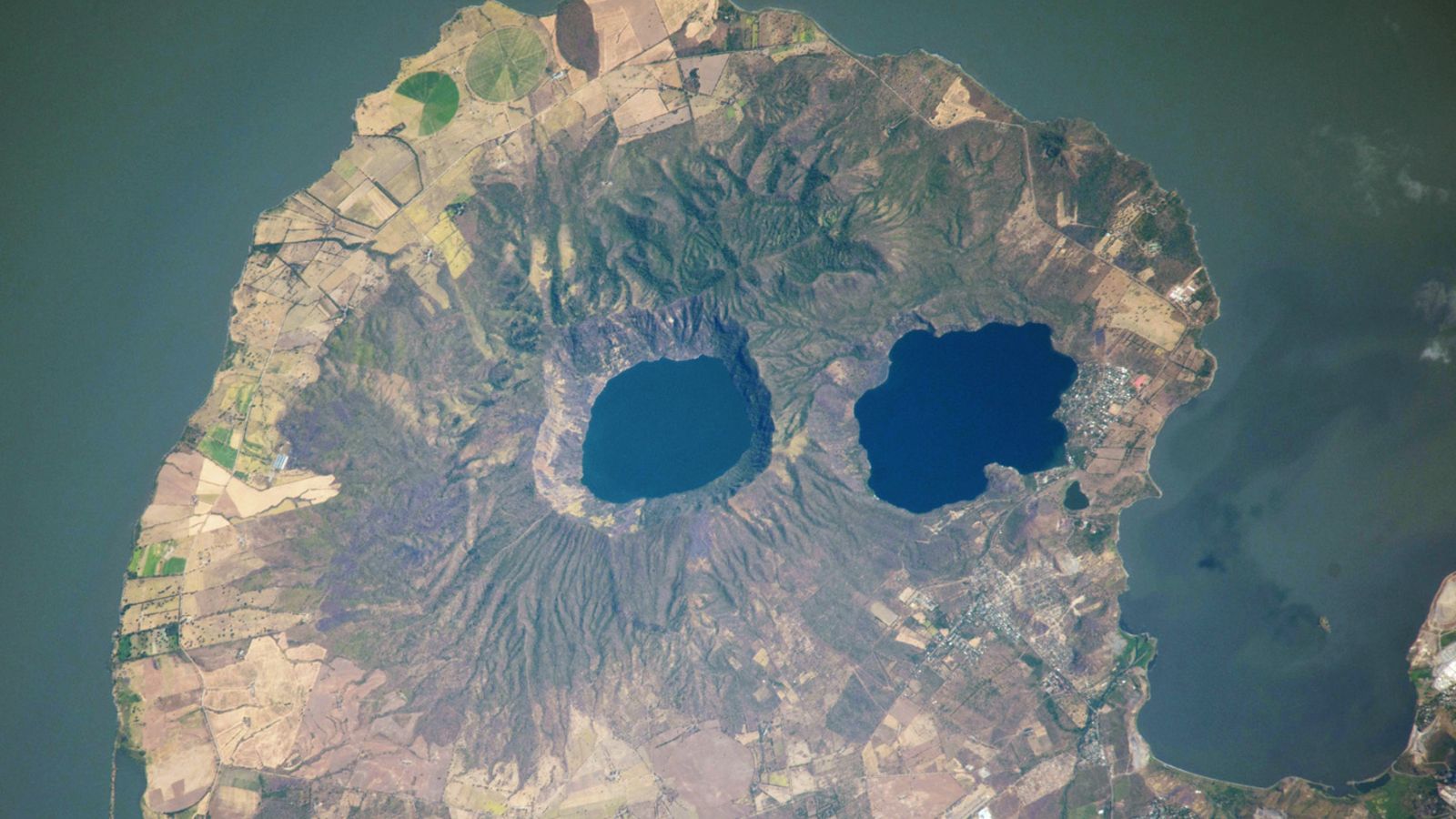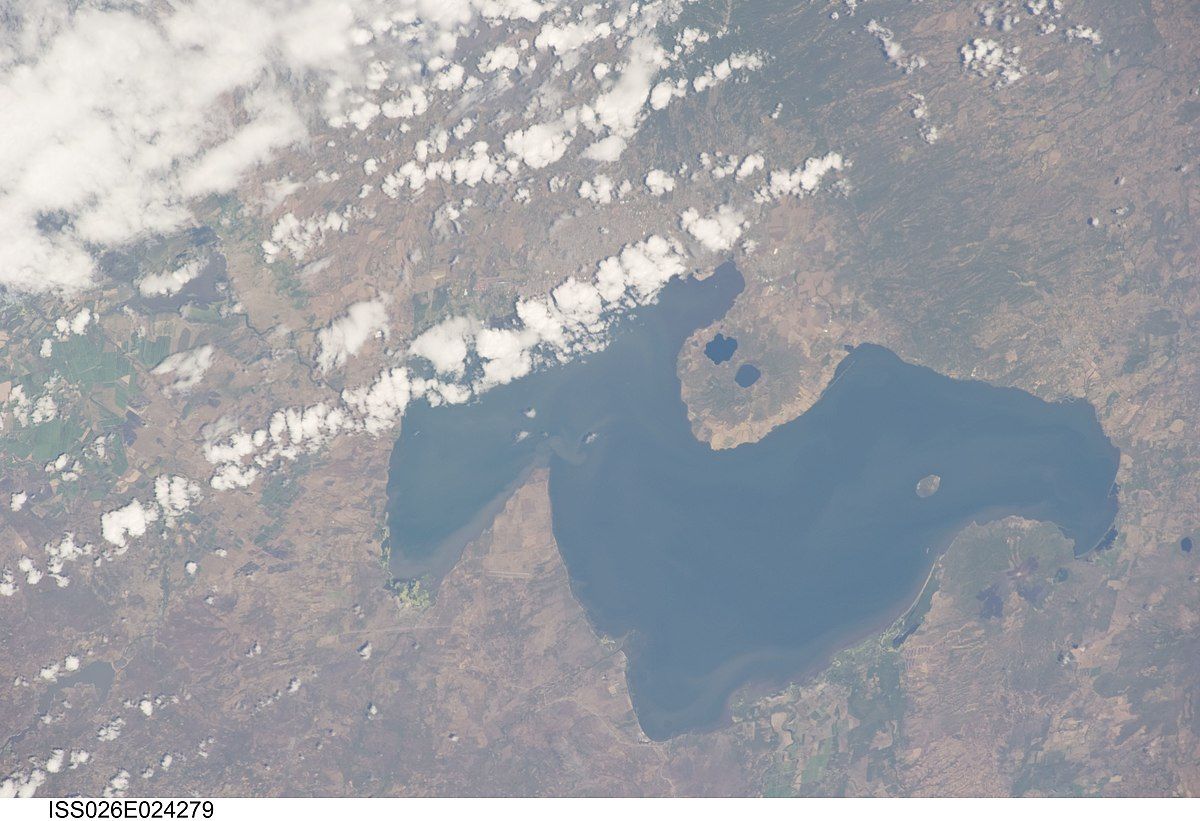💀 What is this 400 square mile giant skull visible only from space?
Follow us on Google News (click on ☆)
The Chiltepe Peninsula, which juts out into the waters of Lake Managua, constitutes what could be considered the head of this curious figure. This geological formation, locally called Lago Xolotlán, extends over approximately 400 square miles (1,040 square kilometers) in the heart of the Central American country. Its origin dates back to a series of pyroclastic shield volcanic eruptions, characterized by the violent ejection of light materials like pumice stone. These major events shaped the landscape about 17,000 years ago, although more recent volcanic activity has been recorded over the past two millennia.

Two volcanic lakes on the Chiltepe Peninsula in Nicaragua resemble a pair of eyes seen from space, an effect invisible from the ground.
Credit: NASA/ISS program
The smaller lake, about 1 mile (1.7 kilometers) wide, occupies the Apoyeque caldera, while the larger one, named Laguna Xiloa, extends 1.5 miles (2.4 kilometers) at its widest point. The latter formed during an explosion caused by the interaction of magma with groundwater. Although they appear side by side from Earth's orbit, their altitudes differ considerably: Lake Apoyeque is located about 1,300 feet (400 meters) above sea level, unlike Laguna Xiloa which is close to sea level. This difference makes it impossible to see both lakes simultaneously from the ground, except from the rim of the Apoyeque crater.
The distinct colors of the lakes add to the illusion: Laguna Xiloa sports a deep blue, while Apoyeque has a greenish hue. If compared to eyes, they would illustrate heterochromia, a rare condition where the irises have different colors. Although their size and shape seem similar at first glance, Lake Apoyeque is actually smaller and more rounded. The illusion persists because the contour of the Apoyeque crater aligns closely with that of Laguna Xiloa, creating this impression of symmetry from space.
Despite their peaceful appearance, Apoyeque and Laguna Xiloa are technically active volcanoes, although their last eruptions date back several millennia. Laguna Xiloa experienced its last eruptive episode about 6,000 years ago, while Apoyeque has had four major eruptions since then, the most recent and explosive one occurring around 50 BCE. In 2012, a swarm of minor earthquakes was detected under Apoyeque, related to magmatic movements, but with no indication of an imminent eruption. However, a major eruption could affect the inhabitants of Managua and threaten the small town of Bosques de Xiloa, located on the shores of the lake.
Volcanic calderas
A caldera is a vast circular depression formed by the collapse of a volcano's summit after a major eruption. Unlike impact craters, it results from the massive expulsion of magma that empties the underlying magma chamber, causing the structure to collapse.
These formations can measure several miles in diameter and often contain lakes, as is the case for Apoyeque. Their creation is generally associated with explosive eruptions that permanently alter the landscape. Calderas are geological witnesses to the most intense volcanic episodes.
Their study helps to understand the eruptive history of volcanoes and assess future risks. Scientists analyze their morphology and sediments to reconstruct past events and forecast potential behaviors.
Heterochromia in geology
Heterochromia, a term borrowed from biology, describes in geology the color difference between two similar natural elements, such as lakes or rocks. This variation is due to distinct environmental and compositional factors.
In the case of volcanic lakes, the color depends on depth, mineral composition, and the presence of algae or sediments. A deep blue lake often indicates clear, deep waters, while a green hue can signal richness in phytoplankton or suspended particles.
These chromatic differences help researchers identify the geochemical processes at play. They reveal unique hydrological histories for each body of water, influenced by volcanism, erosion, and external inputs.
